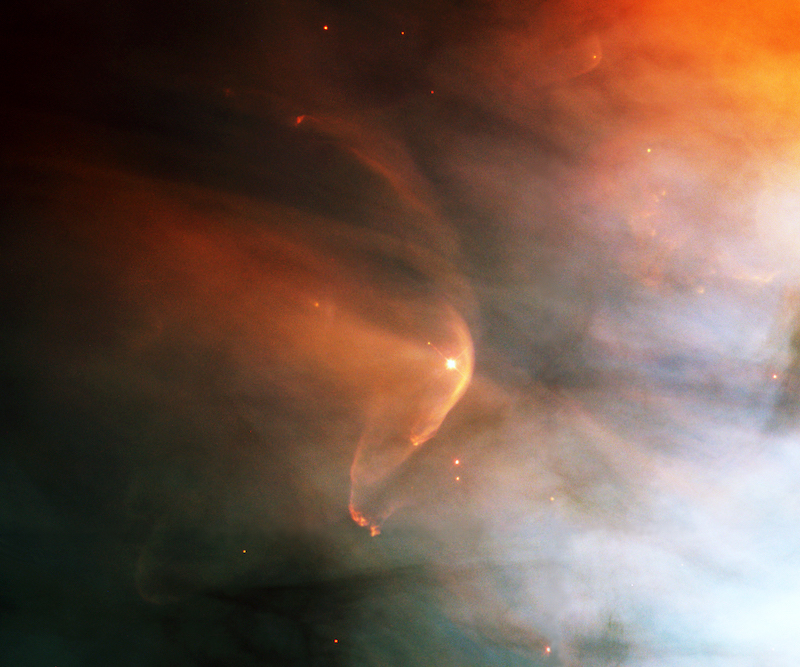
Most stars in our Milky Way galaxy are considered cool stars. Astronomers categorize cool stars as F, G, K or M, with our own sun being a G star. That’s right. Although it’s blazing hot, our sun is considered a cool star. Now think of the coolest variety of star, the M stars, aka red dwarfs. They are the most numerous sort of star in our Milky Way. Red dwarfs tend to be active. They emit strong stellar winds, whose intense radiation can be dangerous for any nearby exoplanets. This summer, researchers at the Leibniz Institute for Astrophysics Potsdam (AIP) in Germany released a new study showing that the stars with stronger magnetic fields produce more powerful winds. Those winds are even more dangerous, and can strip away the atmospheres of any planets that are orbiting their stars too closely. The researchers announced their findings on August 3, 2023.
The researchers published their peer-reviewed results in Monthly Notices of the Royal Astronomical Society on July 19.
1st systematic characterization of stellar winds from cool stars
Stellar winds are constant streams of particles that are emitted by stars (known as the solar wind for our sun). On Earth, they create auroras at the North and South Poles when they hit the Earth’s magnetic field.
The new study is the first systematic characterization of stellar winds in a sample of cool stars. The researchers used numerical simulations with one of the most sophisticated current models. The simulations incorporated the observed large-scale magnetic field distribution of 21 well-observed stars. To do this, the research team used supercomputers at AIP and the Leibniz Supercomputing Centre (LRZ). Various characteristics of the stars were studied, including gravity, magnetic field strength and rotation period.
The researchers studied how those stellar properties affected the stellar winds of the stars. In particular, they examined how velocity and density were affected. Significantly, the results provided new data that questions previous assumptions about stellar wind speeds. In addition, they also help astronomers better predict the size of the Alfvén surface, the boundary between a star’s corona and its stellar wind. Notably, NASA’s Parker Solar Probe crossed the Alfvén surface boundary of our own sun in December 2021.
That is a critical calculation, as it helps determine if the planets around a star will experience strong magnetic star-planet interactions. Moreover, it’s those interactions from the stellar wind that can adversely affect a planet’s potential habitability, including even eroding the planet’s atmosphere.
Larger magnetic fields create stronger winds
The strength of a star’s magnetic field seems to be a key factor here. The researchers found that the stars with magnetic fields larger than that of our sun’s have the fastest stellar winds.
The sun’s stellar wind (solar wind) has a speed of about 280 miles per second (450 km/s). The wind speed of stars with larger magnetic fields, however, can be up to five times faster.
Stellar winds from cool stars affect the habitable zone
The habitable zone is the region around a star where temperatures could allow liquid water on rocky planets. How do these faster winds affect planets in the habitable zone? The study calculated the effects of the stellar wind on planets for all 21 stars. The researchers reported:
Furthermore, our 3D models encompass the entire classical Habitable Zones (HZ) of all the stars in our sample. This allows us to provide the stellar wind dynamic pressure at both edges of the HZ and analyse the variations of this parameter across spectral type and orbital inclination.
The researchers found that the most powerful winds came from K and M (red dwarf) stars. This fits with previous studies showing that red dwarf stars are generally the most hostile environments for nearby planets due to their intense stellar flares. This can affect planets in the habitable zones of those stars, since, because the stars are cooler, their habitable zones are closer to the stars. This makes the planets more susceptible to the stellar winds.
F and G-type stars were the most benign, the study found.

Planets need strong magnetic fields for protection
For K and M stars, any orbiting planets would need to have sufficiently strong magnetic fields to be protected from the stellar wind. The paper says:
We have also found that a planet orbiting K and M stars must have a stronger dipole magnetic field than that of Earth to withstand the wind conditions, if the planetary magnetic field is indeed acting as a shield (this paradigm, however, is starting to be challenged by solar system observations).
Although this study only used 21 stars, the researchers say that the results can be generally extrapolated to other cool stars as well.
Bottom line: A new study from researchers in Germany shows that stellar winds from cool stars with strong magnetic fields can be more powerful than ones from hotter stars.
Source: Numerical quantification of the wind properties of cool main sequence stars
Via Leibniz Institute for Astrophysics Potsdam
Read more: Red dwarf planets may be safe from superflares
Read more: Nearby red dwarf star not so quiet and life-friendly after all











